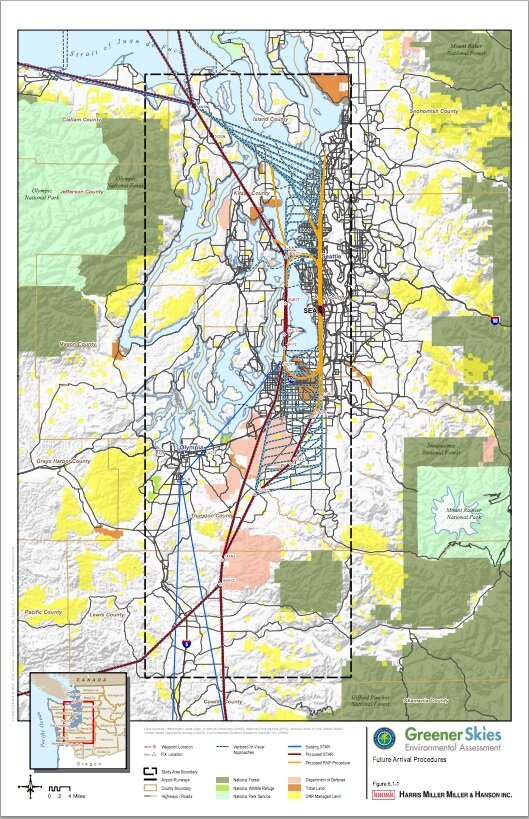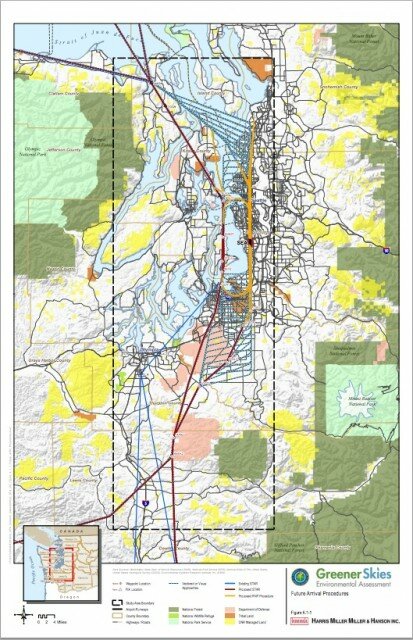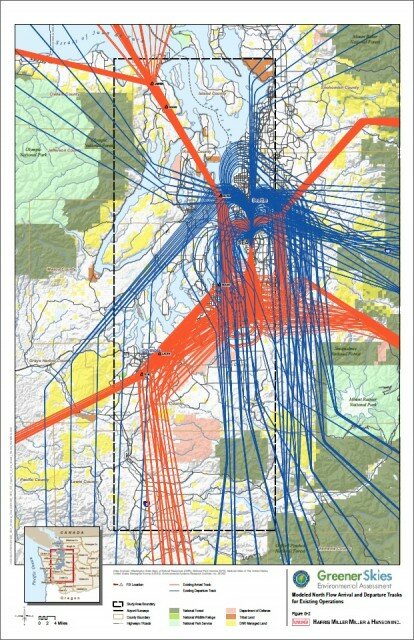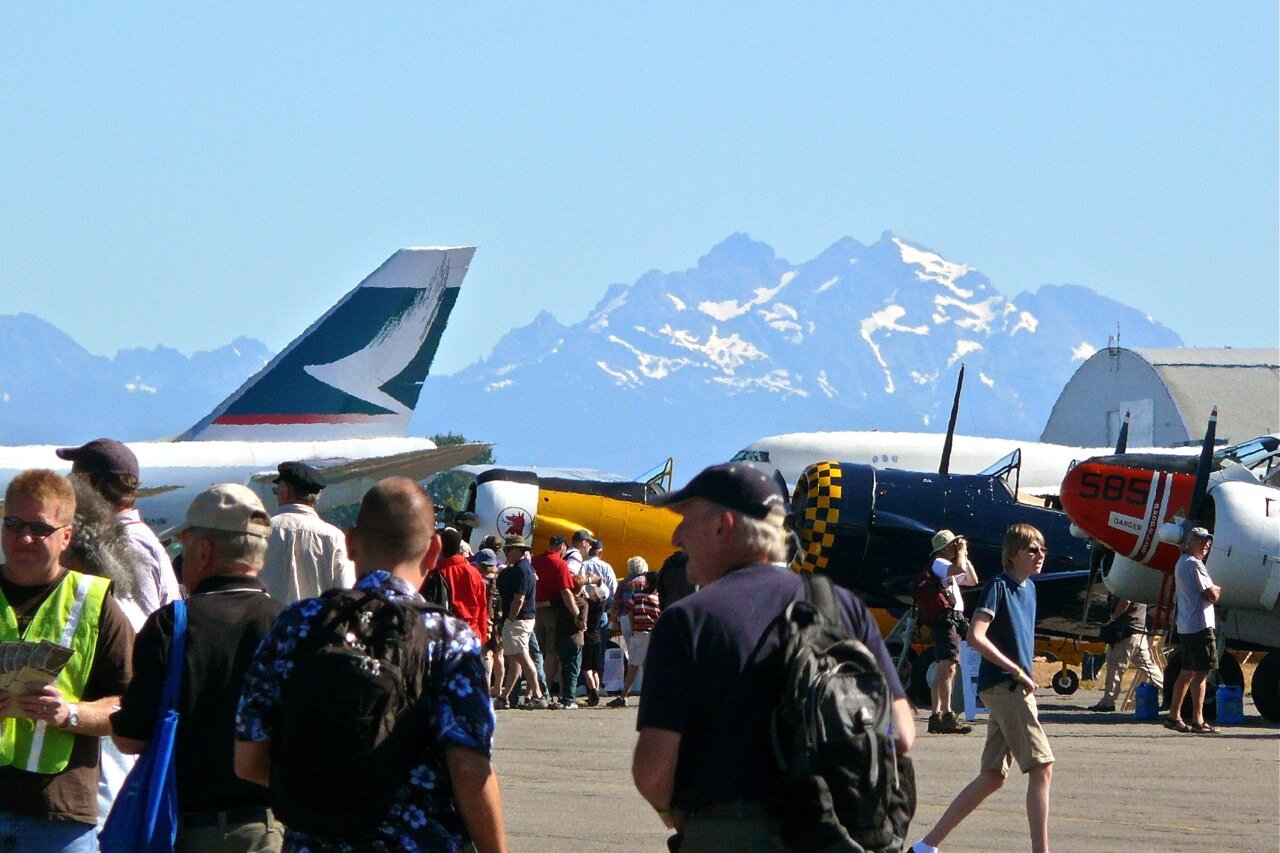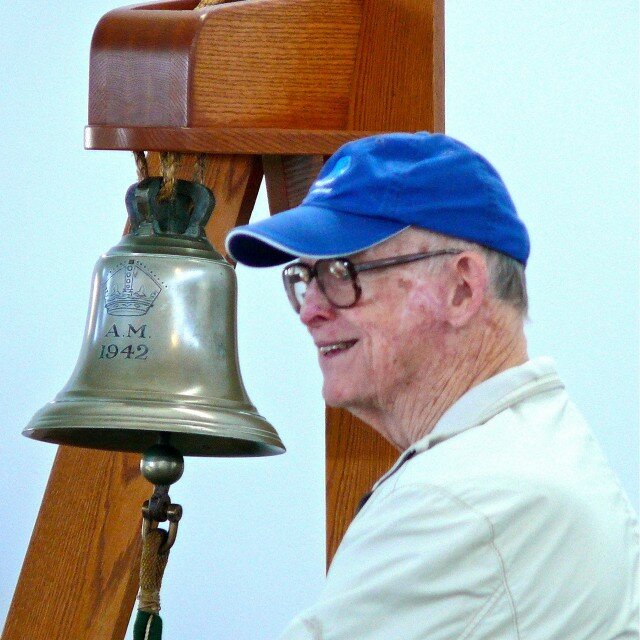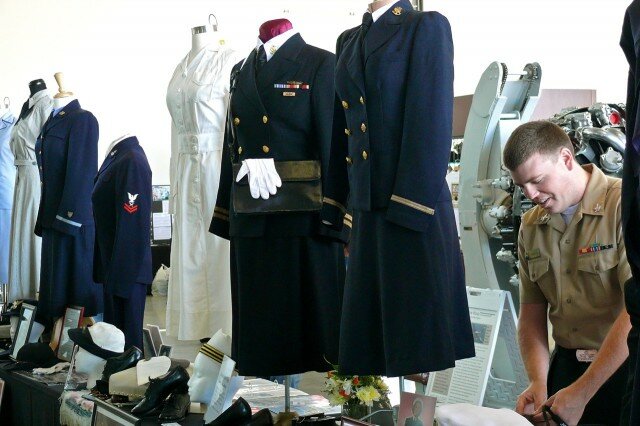Back in June 2012, the FAA launched a study called “Greener Skies Over Seattle,” as part of its larger NextGen initiative to upgrade air traffic control nationwide. (If you follow the news of such things, you may already have heard about previous tests without passengers, in the summer of 2010.)
Now, if you live below a flight path on the north and south SeaTac approaches, you might be noticing a change in the skies above you. In theory, this is all for the better, as the traffic control upgrade is supposed to reduce jet noise, save fuel, and in the future allow a greater volume of arrivals and departures, even in limited-visibility conditions.
For the next six months, the FAA will be analyzing real-world flight data from Greener Skies, in part to continue to optimize, and in part for an environmental assessment process. To provide feedback, make plans to drop in at a public meeting:
- September 5, 2012, from 6:00 to 7:30 PM: Federal Way Library, 34200 1st Way South, Federal Way, WA 98003
- September 6, 2012, from 6:00 to 7:30 PM: Ballard Branch Library, 5614 22nd Ave. NW, Seattle, WA 98107
You can also email comments@greenerskiesea.com by September 14, 2012. The final assessment should be published by the end of the year. (Further study will be conducted in 2014, 2018, and 2023.)
The airline leader in this is Alaska Airlines, which thanks to more challenging Alaskan conditions, has been leveraging technology to fly in and out of airports with satellite-guided precision since the mid-1990s. Together with its subsidiary airlines, Horizon, Alaska carries about half the air passengers at SeaTac (the airport served some 35 million passengers in 2011), and its aircraft are already equipped to implement the alphabet-soup advances the FAA plans: RNAV, RNP, and ODP.
That said, any airline flying more recent Boeing 737s, 757s, and 767-300s or the Airbus A-319, -320, and -321 will likely be able to use the new instrumentation procedures (Canadair’s CRJ-700 and -900 regional jets make the grade, too)–93 percent of SeaTac jets should fall in this category. Traffic from the north, south, and west is most affected: Cranky Flier notes that, “For Alaska, that means 75 percent of its traffic (and around 60 percent of Horizon’s traffic) can take advantage” of the new flight paths.
The tricky part is to integrate satellite-guided approaches with controller-handled approaches. At SeaTac, that means that jets will be cleared for an autopilot approach from as far as 40 miles out (northwest approach) and 140 miles out (southwest), giving controllers time to slot in other planes that need their guidance.
Planes using the optimized descent profile (ODP) will make a single, long “gliding” descent, all at flight idle, which is where the fuel savings come in. Overall, the impact is not huge–it’s expected to provide a one-percent reduction in fuel usage. But airlines would prefer not to spend the extra money if they can help it, and it does reduce fuel usage (and its concomitant pollution) specifically over Seattle.
They also begin that glide at altitude, so they can remain higher up (with less noise making it down to rooftop level) for a longer portion of their approach. Residents close in to SeaTac won’t likely notice much difference in noise-per-jet, but outlying areas might. The new paths are expected to cut 14 to 26 miles of currently dog-legged southern approaches, but will add to others.
A new, shorter western approach that takes southern arrivals over Elliott Bay, rather than over north Seattle, will have an obvious impact for north Seattle residents. But the FAA’s draft assessment (full documentation here) also says:
The new procedure is expected to increase slightly the number of flight miles flown for some aircraft, taking them farther north than at present. Instead of overflying northern portions of Kitsap County as now, more of that traffic would approach the runways from over Hansville and Puget Sound south of Island County.
The ramifications of the changes are a little mind-boggling, if you want to know what precisely the effects will be. Really, only time will tell. Consider that so much depends on which way the wind blows:
Because aircraft operate most effectively into the wind, and winds are always reported in the direction from which they are blowing, September is the most likely month to experience the use of northerly-oriented runways 34L, 34C, and 34R. Other months, the winds would tend to favor use of southerly oriented runways 16L, 16C, and 16R.
